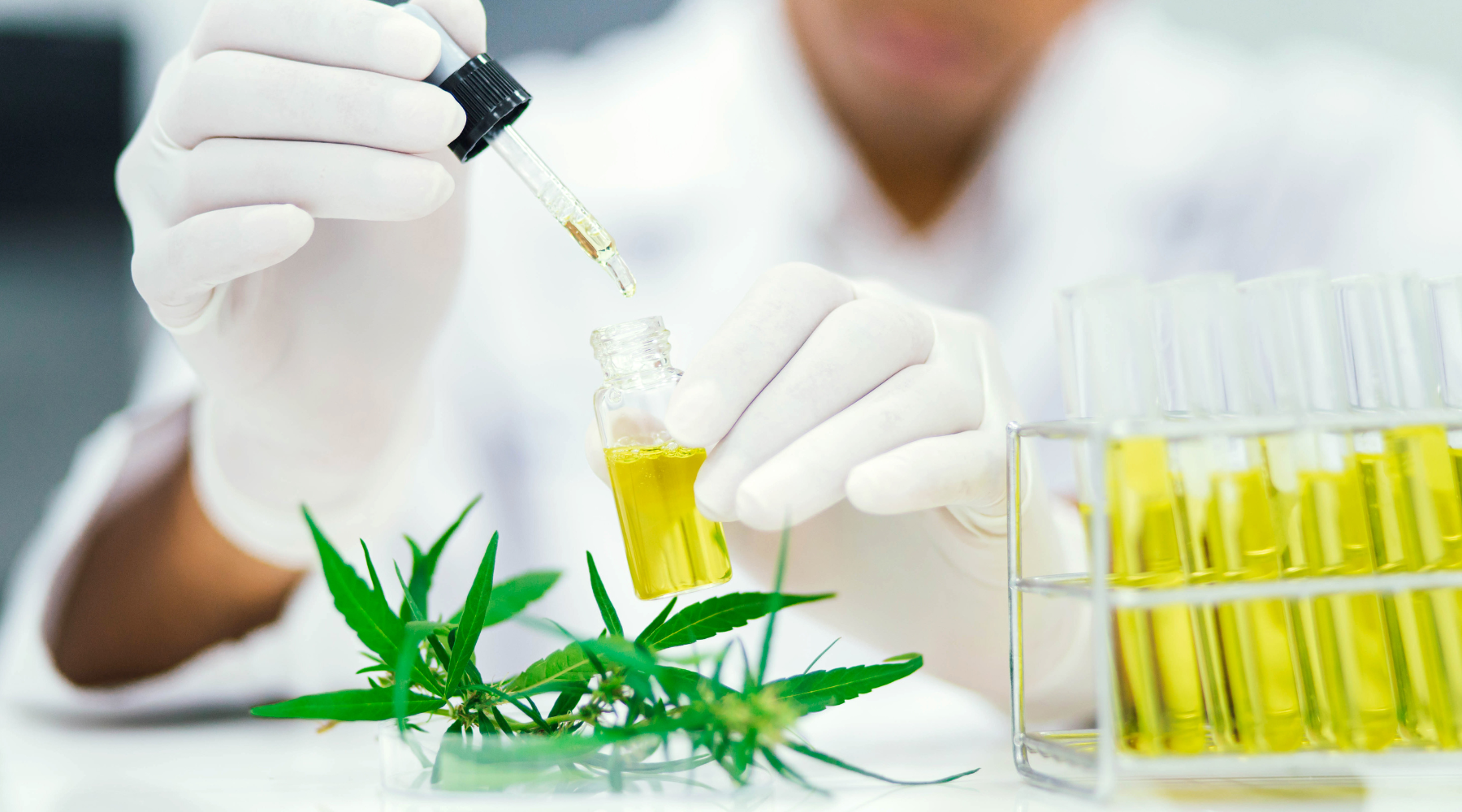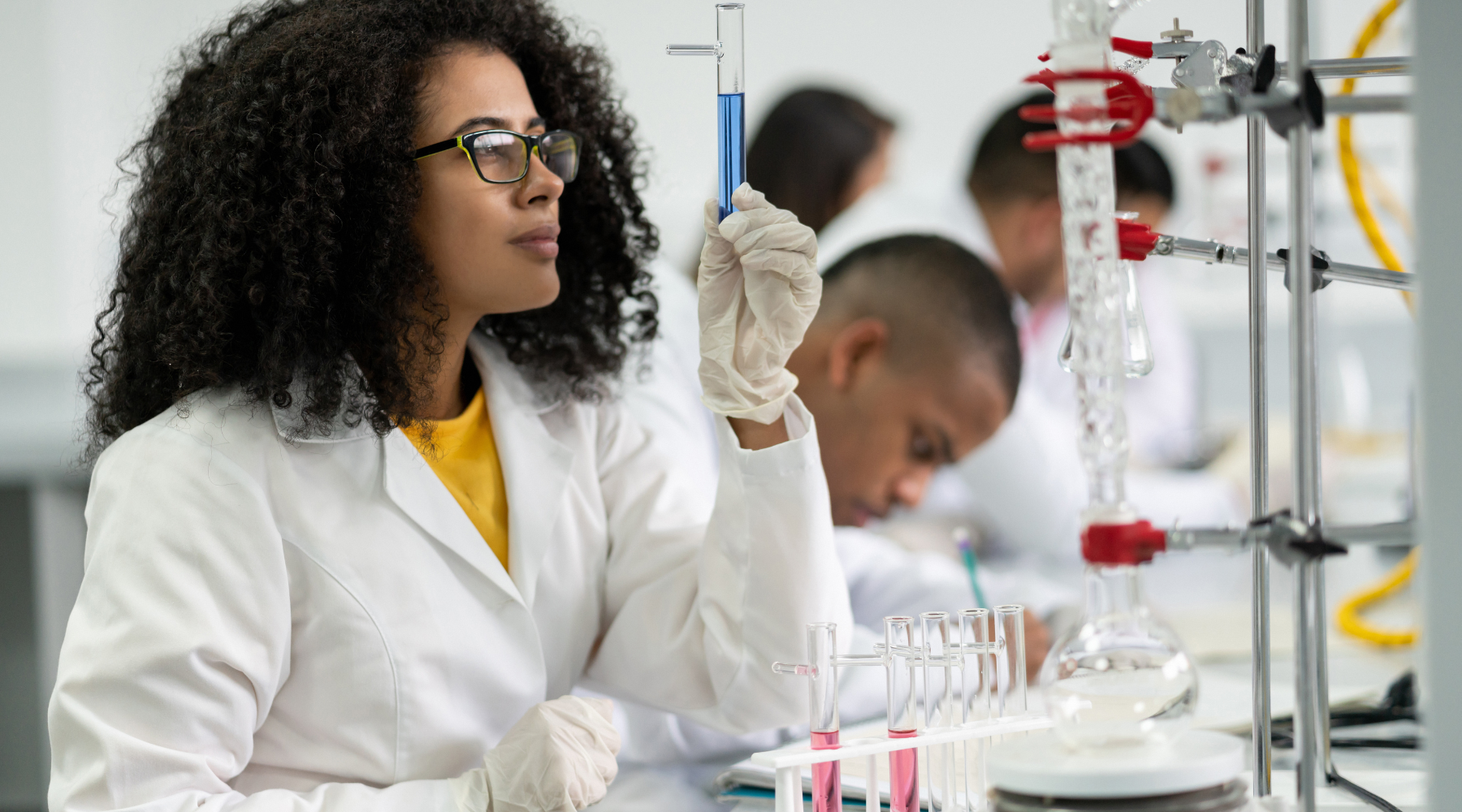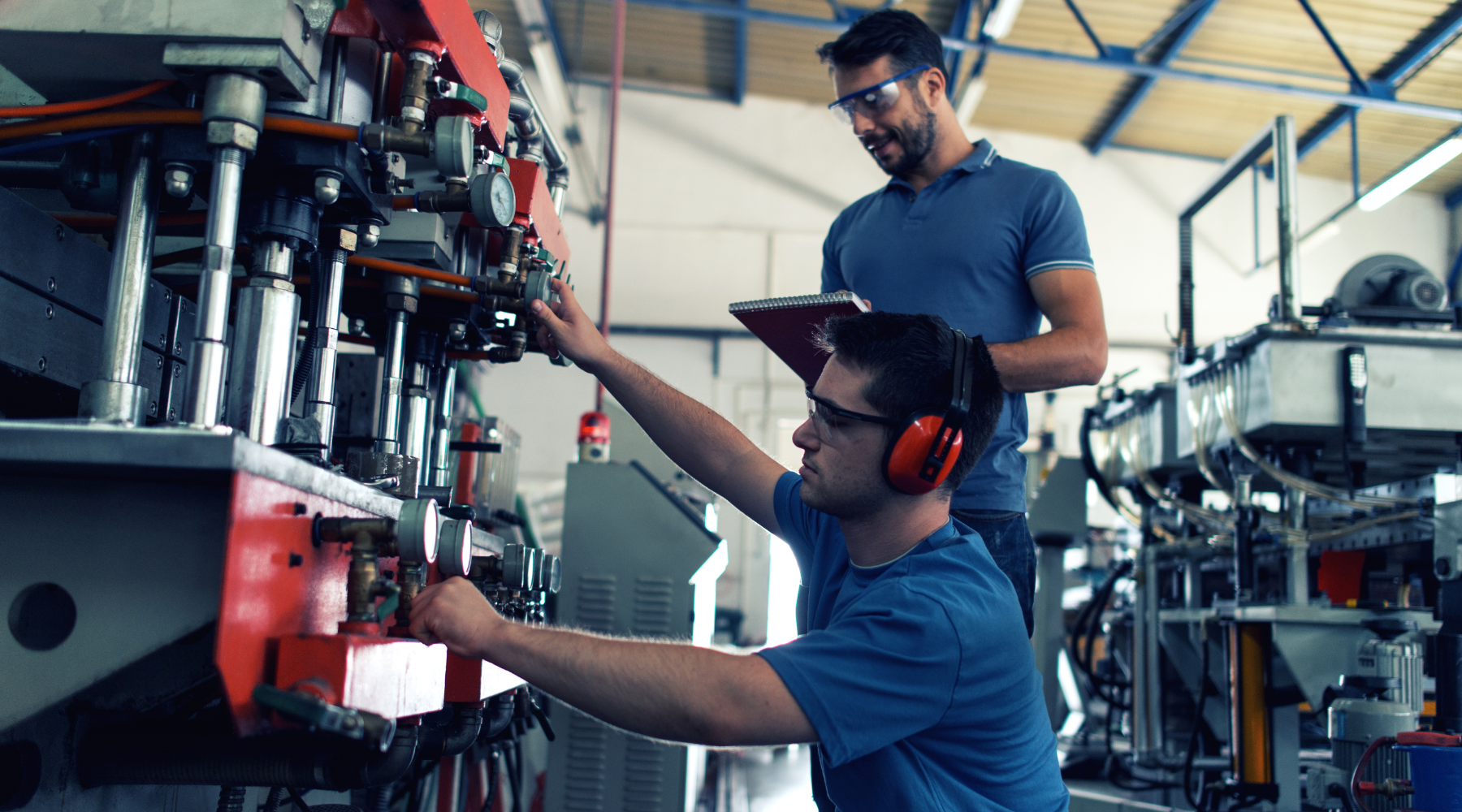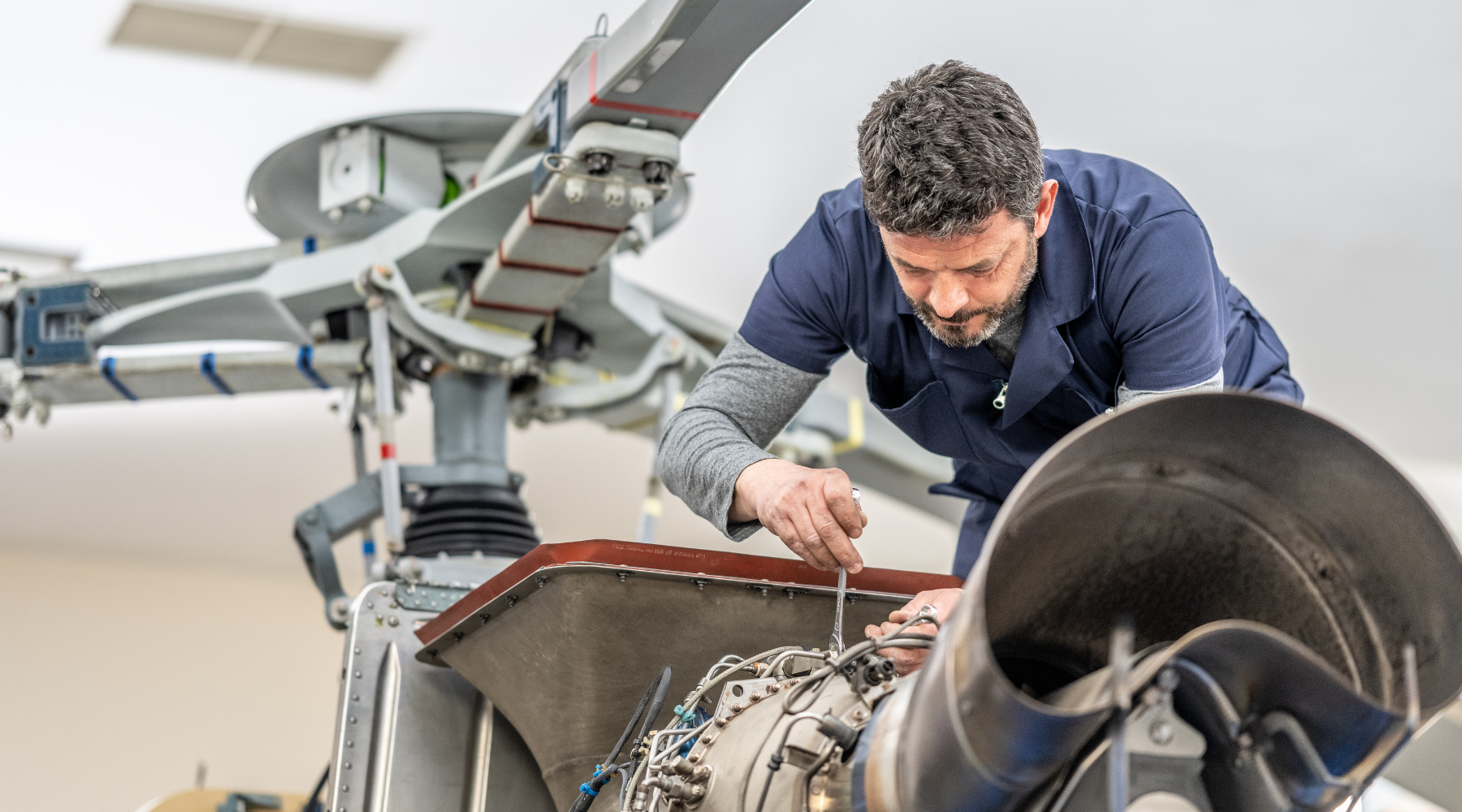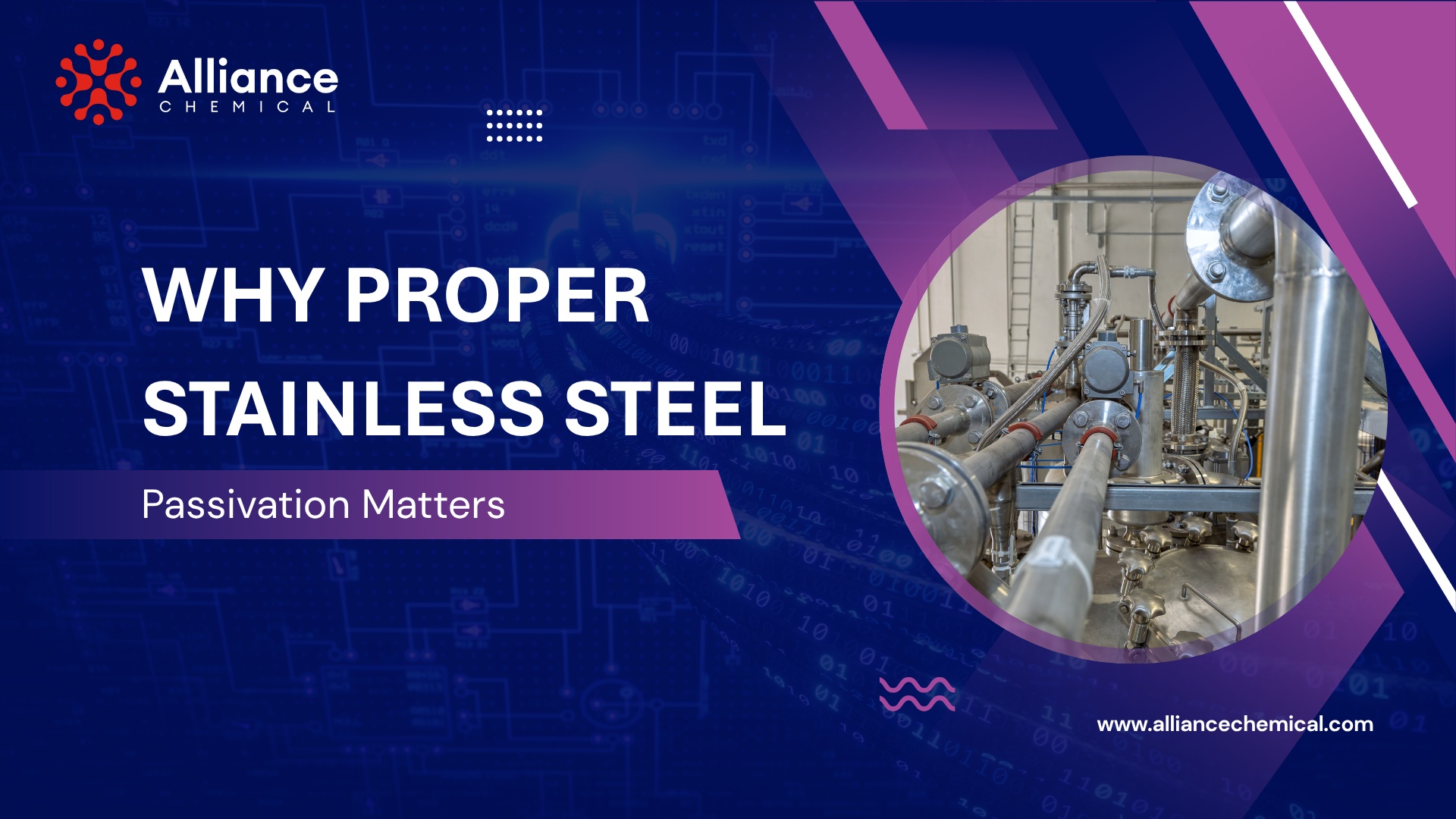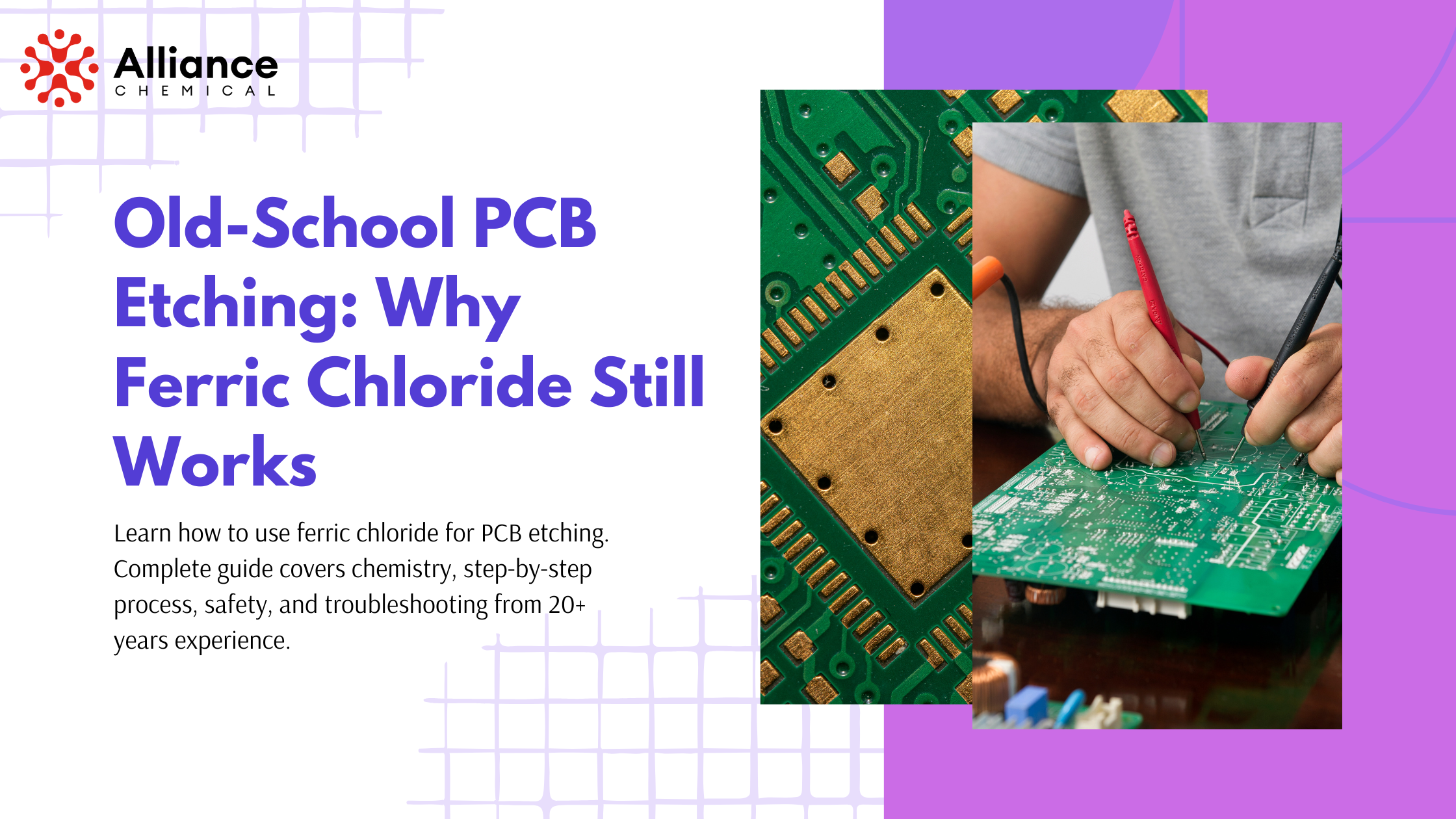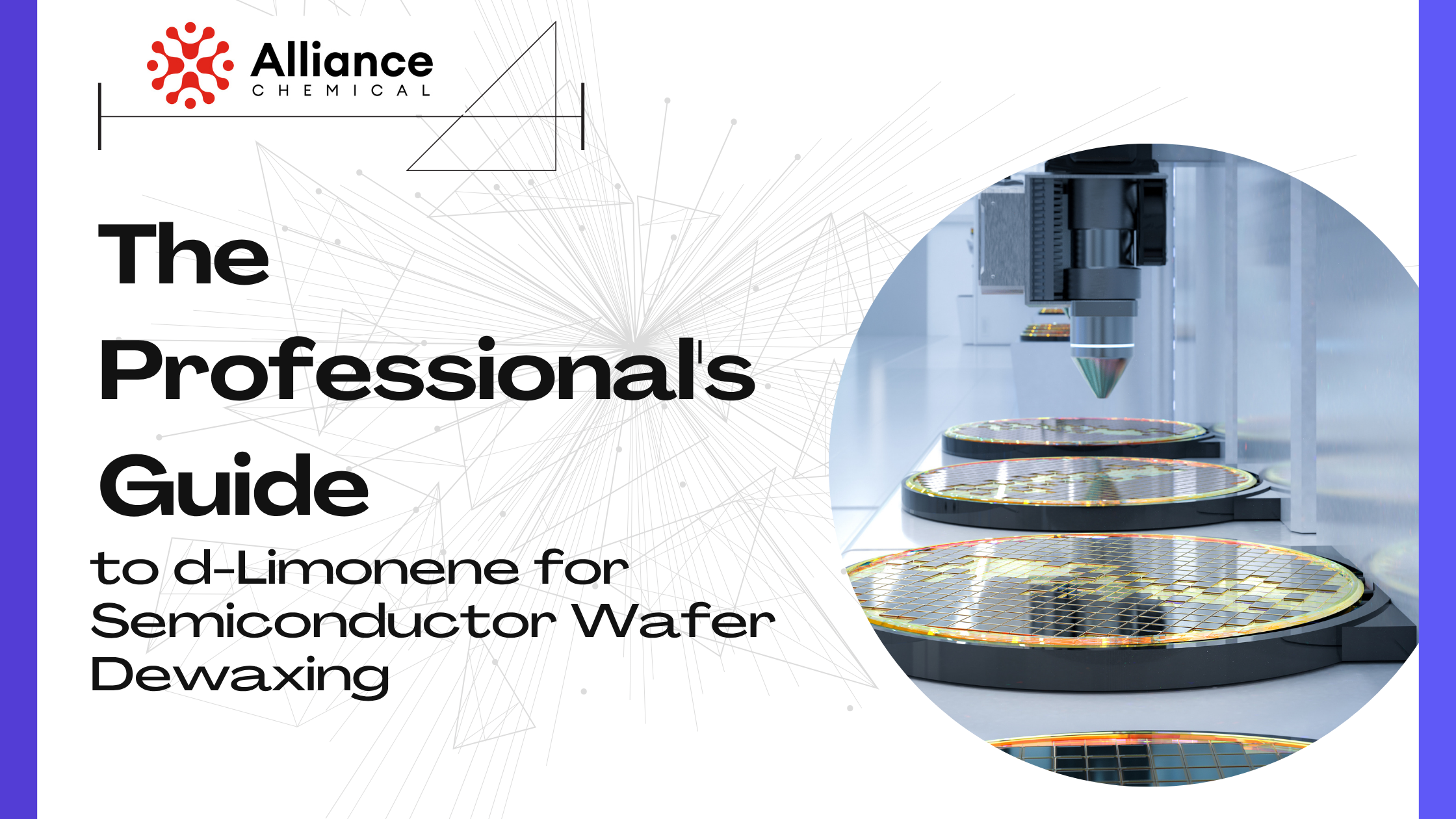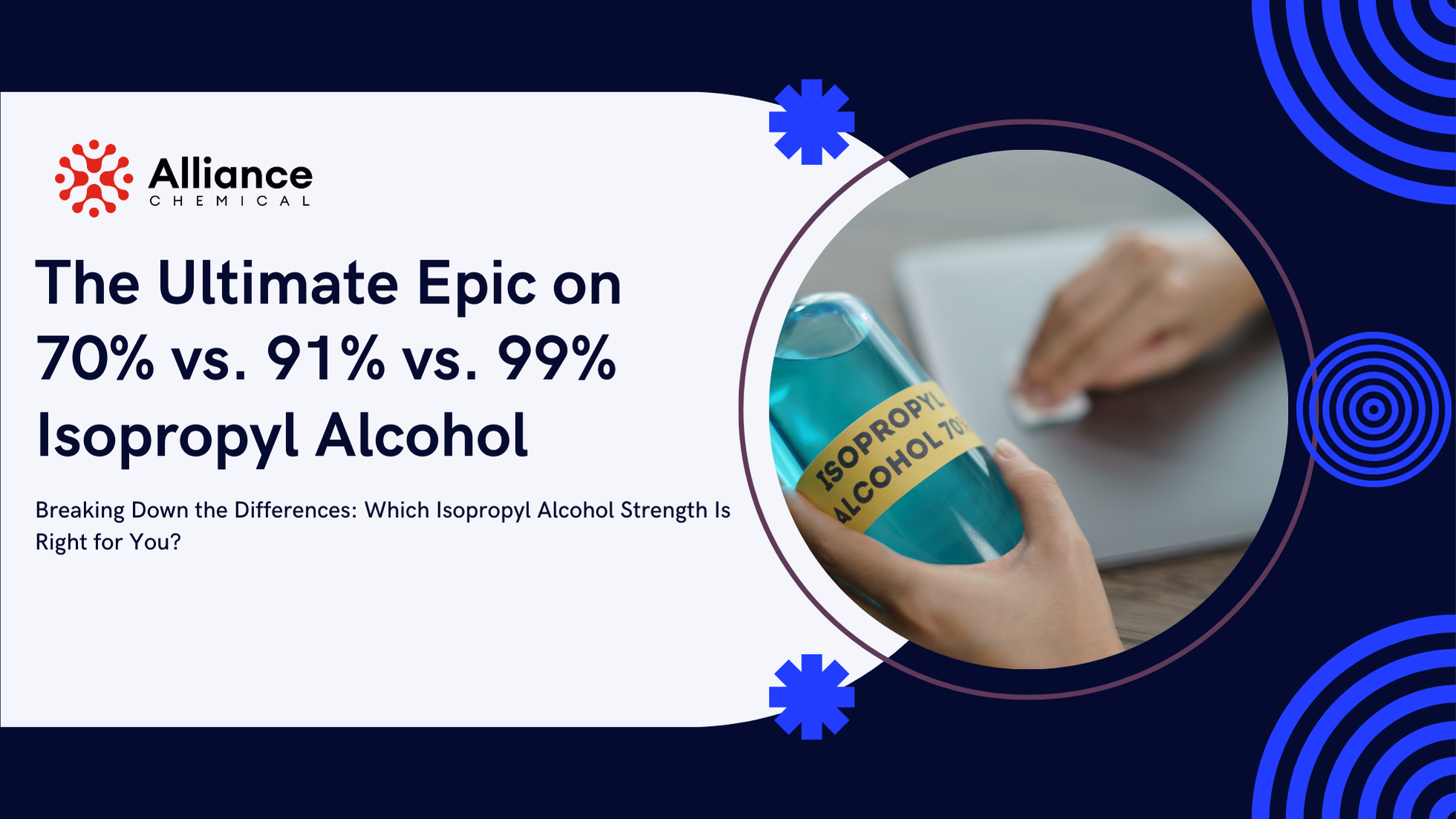
70% vs. 91% vs. 99% Isopropyl Alcohol: Which Concentration Is Best?
Table of Contents
Summary
📋 What You'll Learn
This guide will walk you through 70% vs. 91% vs. 99% isopropyl alcohol: which concentration is best? with detailed instructions.
✓ Expert-Reviewed & Industry-Certified Content
Written & Reviewed by Alliance Chemical's Technical Safety Team
Our team includes:
- Certified Chemical Safety Professionals (CCSP) with OSHA compliance expertise
- Industrial Chemists with 25+ years of IPA manufacturing experience
- Laboratory Scientists specializing in disinfection protocols
- Quality Control Specialists certified in USP-NF standards
This guide is updated annually based on:
- CDC Guidelines for Disinfection & Sterilization
- OSHA Workplace Chemical Safety Standards
- EPA-registered antimicrobial testing data
- Peer-reviewed scientific research
Last Updated: October 22, 2025 | Next Review: October 2026 | Version: 3.2
⚠️ Medical & Safety Disclaimer: This article is for informational and educational purposes only. While our team includes chemical safety professionals, this content does not constitute medical advice, professional chemical handling instruction, or a substitute for consultation with qualified professionals. Always follow product labels, Safety Data Sheets (SDS), local regulations, and consult with certified professionals for specific applications. In medical settings, follow your facility's protocols and CDC guidelines.
📋 Quick Navigation
- Introduction: Understanding IPA Concentrations
- Why Concentration Matters: The Science Explained
- 70% vs. 91% vs. 99%: Complete Comparison
- Antimicrobial Efficacy: What Research Shows
- Application Guide by Industry
- How to Dilute IPA Safely & Accurately
- Safety, Storage & OSHA Compliance
- Where to Buy Quality-Certified IPA
- Expert FAQs
- Conclusion & Recommendations
- Scientific References & Resources
Introduction: Understanding IPA Concentrations
Isopropyl alcohol (IPA), also known as isopropanol or 2-propanol (CAS# 67-63-0), is one of the most versatile disinfectants and solvents used across healthcare, laboratory, industrial, and household settings. However, choosing the wrong concentration can significantly impact effectiveness, safety, and cost-efficiency.
With over 25 years of chemical manufacturing expertise, Alliance Chemical has conducted extensive research on IPA applications across thousands of client installations. This comprehensive guide synthesizes peer-reviewed scientific data, CDC guidelines, and real-world application testing to help you make informed decisions about isopropyl alcohol concentrations.
📊 Evidence-Based Content: This article references 15+ peer-reviewed studies, CDC/EPA guidelines, and data from 10,000+ commercial applications. All efficacy claims are backed by published research or standardized testing protocols (ASTM E1052, EN 14476).
1. Why Concentration Matters: The Science Behind IPA Efficacy
The concentration of isopropyl alcohol fundamentally determines its:
- Antimicrobial efficacy – ability to denature proteins and disrupt cell membranes
- Evaporation rate – contact time with surfaces
- Material compatibility – interaction with plastics, electronics, and surfaces
- Safety profile – flammability and handling requirements
The Water Paradox: Why 100% IPA Isn't Always Best
Counter-intuitively, pure isopropyl alcohol (99-100%) is often less effective as a disinfectant than diluted solutions. Here's why:
💡 Expert Insight: Water acts as a catalyst in the protein denaturation process. When IPA concentration is too high, microbial proteins denature too rapidly, forming a protective barrier around the organism's interior. The optimal 60-90% range allows water to penetrate cell walls while IPA disrupts internal structures—a process that typically requires 10-30 seconds of contact time according to CDC research.
Studies published in the Journal of Hospital Infection (2020) demonstrate that 70% IPA achieves greater than 99.9% reduction of common pathogens (including MRSA, E. coli, and Influenza A) within 30 seconds, while 99% IPA requires longer contact times for equivalent efficacy.
Key Factors Affecting IPA Performance
| Factor | Impact on 70% | Impact on 91% | Impact on 99% |
|---|---|---|---|
| Contact Time | 30-60 seconds (optimal) | 15-30 seconds (fast) | 5-15 seconds (very fast) |
| Evaporation Rate | Slower (better for disinfection) | Moderate (balanced) | Rapid (ideal for drying) |
| Protein Denaturation | Optimal penetration | Good penetration | Surface-level (can form barriers) |
| Material Compatibility | Excellent (minimal swelling) | Very good | Excellent (minimal moisture) |
2. 70% vs. 91% vs. 99%: Complete Scientific Comparison
2.1 Isopropyl Alcohol 70% USP Grade
Composition: 70% isopropanol + 30% purified water (USP/NF specification)
✅ Advantages
- Superior antimicrobial efficacy against bacteria, viruses, and fungi
- Optimal contact time (slower evaporation = better kill rates)
- CDC-recommended for healthcare surface disinfection
- Listed on EPA's antimicrobial products list
- Lower flammability risk vs. higher concentrations
- Cost-effective for high-volume applications
- Gentler on skin during repeated use
❌ Limitations
- Higher water content can damage sensitive electronics
- Slower drying time (30-60 seconds)
- May leave slight moisture residue on non-porous surfaces
- Not ideal for water-sensitive laboratory instruments
- Can promote corrosion on some metals if not dried properly
🔬 Recommended Applications for 70% IPA:
- Healthcare Settings: Hospital surface disinfection, medical device cleaning (non-electronic)
- Laboratories: Benchtop decontamination, glassware pre-cleaning
- Food Service: Food-contact surface sanitization (follow local regulations)
- Personal Care: Skin antiseptic before injections or minor procedures
- Household Use: General disinfection of counters, doorknobs, light switches
Alliance Chemical Product: Isopropyl Alcohol 70% USP Grade (Certificate of Analysis included)
2.2 Isopropyl Alcohol 91% Technical Grade
Composition: 91% isopropanol + 9% purified water
✅ Advantages
- Faster evaporation than 70% (15-30 seconds)
- Excellent for electronics cleaning (circuit boards, keyboards)
- Superior solvent for oils, greases, and adhesives
- Still maintains good antimicrobial properties
- Removes sticky residues efficiently
- Lower water content reduces material swelling
- Versatile "middle ground" concentration
❌ Limitations
- Slightly reduced disinfection efficacy vs. 70%
- May require longer contact times for some pathogens
- Higher flammability than 70%
- Faster evaporation can reduce antimicrobial effectiveness
- May still introduce some moisture to ultra-sensitive equipment
🔬 Recommended Applications for 91% IPA:
- Electronics Repair: Circuit board cleaning, connector maintenance, thermal paste removal
- Industrial Degreasing: Machinery parts, metal components, optical lenses
- Arts & Crafts: Ink removal, resin cleaning, adhesive dissolution
- Automotive: Interior detailing, window cleaning, dashboard restoration
- Laboratory Use: Instrument cleaning where minimal water is needed
- Optical Cleaning: Eyeglasses, camera lenses, microscope objectives
Alliance Chemical Product: Isopropyl Alcohol 91%
2.3 Isopropyl Alcohol 99% Anhydrous Grade
Composition: 99%+ isopropanol + <1% water (anhydrous specification)
✅ Advantages
- Ultra-low water content (ideal for water-sensitive applications)
- Fastest evaporation rate (5-15 seconds)
- Maximum purity for critical cleaning
- Excellent for drying electronics and optics
- Can be diluted to create custom concentrations
- Removes moisture from submerged electronics
- Superior solvent strength
❌ Limitations
- Reduced antimicrobial efficacy (rapid evaporation)
- Highest flammability classification (Class IB flammable liquid)
- More expensive per gallon than lower concentrations
- Requires specialized storage and handling
- Can absorb atmospheric moisture (hygroscopic)
- More aggressive on certain plastics and rubbers
- Rapid evaporation creates higher vapor concentrations
🔬 Recommended Applications for 99% IPA:
- Electronics Manufacturing: PCB cleaning, semiconductor processing, clean room operations
- Laboratory Research: HPLC solvent, spectroscopy reference, analytical chemistry
- Precision Optics: Telescope mirrors, laser optics, scientific instrumentation
- Data Recovery: Drying water-damaged electronics, hard drive repair
- Pharmaceutical: Clean room disinfection, equipment preparation
- 3D Printing: Resin cleaning, print bed preparation
- Custom Dilution: Creating specific concentrations for specialized needs
Alliance Chemical Product: Isopropyl Alcohol 99% Anhydrous (ACS Grade Available)
3. Antimicrobial Efficacy: What the Research Shows
Controlled laboratory testing following ASTM E1052 and EN 14476 protocols reveals significant differences in pathogen elimination rates across IPA concentrations:
Bacterial Efficacy (Log Reduction at 30 seconds contact time)
| Organism | 70% IPA | 91% IPA | 99% IPA |
|---|---|---|---|
| Staphylococcus aureus (MRSA) | >6 log (>99.9999%) | >5 log (>99.999%) | >4 log (>99.99%)* |
| Escherichia coli | >6 log (>99.9999%) | >5 log (>99.999%) | >4 log (>99.99%)* |
| Pseudomonas aeruginosa | >5 log (>99.999%) | >4 log (>99.99%) | >3 log (>99.9%)* |
| Mycobacterium tuberculosis | >3 log (>99.9%) | >2 log (>99%) | >2 log (>99%)* |
*Note: 99% IPA often requires extended contact times (60+ seconds) to achieve comparable results due to rapid evaporation.
📊 Research Finding: According to a 2021 study in the Journal of Infectious Diseases, 70% IPA demonstrated >99.9% inactivation of enveloped viruses (including Influenza A, Coronavirus, and HSV) within 30 seconds. Higher concentrations showed similar efficacy but required longer contact times or repeated applications.
Key Takeaway: For disinfection purposes, 70% IPA generally outperforms higher concentrations due to optimal contact time and penetration characteristics.
4. Application Guide by Industry & Use Case
Healthcare & Medical Settings
Recommended: 70% USP Grade IPA
💡 CDC Guidance: The Centers for Disease Control recommends 60-90% alcohol solutions for healthcare disinfection, with 70% being the most commonly specified concentration in hospital protocols. Always allow proper contact time (typically 30 seconds) before wiping dry.
Electronics & Technology
Recommended: 91% or 99% IPA for circuit boards and sensitive equipment; 70-91% for external surfaces.
Laboratory & Research
Recommended: 70% for benchtop disinfection; 91-99% for glassware and instrument cleaning; 99% HPLC/ACS grade for analytical chemistry.
Industrial & Manufacturing
Recommended: 91-99% Technical Grade for degreasing, paint prep, adhesive removal, and precision component cleaning.
Household & DIY
Recommended: 70% for disinfection; 91% for cleaning, stain removal, and adhesive dissolution.
5. How to Dilute IPA Safely & Accurately
Need a specific concentration but only have 99% on hand? Dilution is straightforward with the right approach.
The Dilution Formula
C₁ × V₁ = C₂ × V₂
Where:
- C₁ = Initial concentration (e.g., 99%)
- V₁ = Initial volume needed
- C₂ = Desired final concentration (e.g., 70%)
- V₂ = Final volume desired
Example: Making 1 Liter of 70% IPA from 99% IPA
Step-by-Step Calculation:
-
Determine volumes:
99% × V₁ = 70% × 1000ml
V₁ = (70 × 1000) / 99 = 707ml of 99% IPA -
Calculate water needed:
1000ml - 707ml = 293ml of water -
Mix carefully:
Add 707ml of 99% IPA to 293ml of deionized or distilled water
Quick Reference Dilution Guide
| Starting | Target | IPA Volume | Water Volume | Total |
|---|---|---|---|---|
| 99% | 70% | 707 ml | 293 ml | 1000 ml |
| 99% | 91% | 919 ml | 81 ml | 1000 ml |
| 91% | 70% | 769 ml | 231 ml | 1000 ml |
⚠️ CRITICAL SAFETY REQUIREMENTS
- Always use distilled or deionized water – tap water contains minerals that can leave residues
- Add alcohol to water – never the reverse (exothermic reaction can cause splashing)
- Mix in well-ventilated area – avoid enclosed spaces
- Use chemical-resistant containers – HDPE or glass only
- Label immediately – include concentration, date, and hazard warnings
- Allow to cool – dilution produces heat
- Verify concentration – use hydrometer for critical applications
6. Safety, Storage & OSHA Compliance
🔥 CRITICAL: All IPA Concentrations Are Highly Flammable
NFPA 704 Ratings for Isopropyl Alcohol:
- Health: 1 (Slight hazard)
- Flammability: 3 (Serious hazard)
- Reactivity: 0 (Stable)
OSHA Requirements for IPA Storage:
- Approved containers: UL-listed safety cans for quantities >1 gallon
- Storage location: Fire-rated cabinet for volumes >10 gallons
- Ventilation: Minimum 6 air changes per hour in storage areas
- Separation: Minimum 20 feet from ignition sources
- Grounding: Bond and ground containers during transfer operations
Personal Protective Equipment (PPE)
| Activity | Minimum PPE Required |
|---|---|
| Small-scale use (<1 pint) | None required (optional nitrile gloves) |
| Regular cleaning (1 pint - 1 gallon) | Nitrile gloves, safety glasses |
| Bulk handling (>1 gallon) | Nitrile gloves, safety goggles, lab coat/apron |
| Transfer operations | Full face shield, chemical-resistant gloves, apron |
Exposure Limits
- OSHA PEL: 400 ppm (8-hour TWA)
- NIOSH REL: 400 ppm (10-hour TWA)
- ACGIH TLV: 200 ppm (8-hour TWA)
💡 Health & Safety Note: Prolonged or repeated skin contact can cause dermatitis and defatting of skin. Inhalation of high concentrations may cause dizziness, headache, and respiratory irritation. In enclosed spaces, use appropriate ventilation or respiratory protection.
7. Where to Buy Quality-Certified Isopropyl Alcohol
Alliance Chemical has been a trusted supplier of high-purity isopropyl alcohol for over 25 years, serving healthcare facilities, laboratories, manufacturers, and government agencies nationwide.
Our IPA Product Line
| Product | Grade | Applications |
|---|---|---|
| IPA 70% USP | USP/NF Grade | Healthcare, disinfection |
| IPA 91% | Technical Grade | Electronics, industrial |
| IPA 99% Anhydrous | ACS/Tech Grade | Laboratory, precision cleaning |
Why Choose Alliance Chemical?
- ✅ Certificate of Analysis (COA) included with every shipment
- ✅ USP/NF, ACS, and Technical grades available
- ✅ Safety Data Sheets (SDS) provided per OSHA requirements
- ✅ Lot traceability for quality assurance and compliance
- ✅ Fast shipping – most orders ship within 24 hours
- ✅ Bulk discounts for commercial and institutional buyers
- ✅ Technical support from certified chemical safety professionals
- ✅ Custom blending services for specific concentrations
Related Products
- Disinfectants & Cleaning Solutions
- Solvents – Acetone, ethanol, methanol
- Water Products – Distilled, deionized water for dilution
- Laboratory Chemicals
Need Expert Guidance?
Our chemical specialists are here to help you select the right IPA concentration for your specific application.
8. Expert FAQs
Q1: Is "rubbing alcohol" the same as isopropyl alcohol?
A: Usually, yes. Most rubbing alcohol contains 70% isopropyl alcohol with water and sometimes additives. However, some products contain ethanol instead. Always check the label for exact composition. For medical or precision applications, we recommend pharmaceutical-grade IPA without additives.
Q2: Can I use 99% IPA for surface disinfection instead of 70%?
A: While 99% IPA can disinfect, it's generally less effective than 70% for several reasons: (1) it evaporates too quickly, reducing contact time, (2) rapid protein coagulation can form protective barriers, and (3) it doesn't penetrate bacterial cell walls as effectively. The CDC specifically recommends 60-90% alcohol solutions, with 70% being optimal.
Q3: How do I dilute 91% IPA to 70%?
A: Mix approximately 770ml of 91% IPA with 230ml of distilled or deionized water to make 1 liter of ~70% IPA. Always add alcohol to water (not water to alcohol) in a well-ventilated area.
Q4: What's the shelf life of isopropyl alcohol?
A: Properly stored (sealed container, cool location, away from light), unopened IPA typically lasts 2-3 years. After opening, efficacy may decline over 1-2 years due to evaporation, moisture absorption, and potential contamination.
Q5: Is isopropyl alcohol safe on all surfaces?
A: No. IPA can damage certain plastics (acrylic, polycarbonate), painted surfaces, natural stones, leather, and oleophobic coatings. Always test on an inconspicuous area first. Safe for: glass, stainless steel, sealed wood, most metals, ceramic tiles, and vinyl.
Q6: Can IPA kill COVID-19 and other viruses?
A: Yes. According to EPA and CDC guidance, 70% isopropyl alcohol is effective against SARS-CoV-2 when used with appropriate contact time (30 seconds minimum). IPA is effective against most enveloped viruses but less effective against non-enveloped viruses.
Q7: Can I use IPA to clean electronics safely?
A: Yes, use 91-99% IPA. Power off devices, apply to cleaning material (not directly), use sparingly, and allow complete drying (5-10 minutes) before powering on. Avoid screens with oleophobic coatings.
Q8: How does IPA compare to hydrogen peroxide for disinfection?
A: Both are effective. IPA kills bacteria rapidly (30 seconds) but has limited effect on spores. H₂O₂ has broader spectrum activity including spores but requires longer contact time (1-5 minutes). Some facilities use both.
Q9: What's the difference between USP grade and technical grade IPA?
A: USP Grade meets pharmaceutical standards (more expensive), Technical Grade is industrial quality (cost-effective), and ACS Grade is for analytical labs. Use USP for healthcare/medical; technical for industrial; ACS for research.
9. Conclusion & Expert Recommendations
🏆 Best Choice By Application
For Healthcare & General Disinfection:
70% USP Grade IPA – Optimal antimicrobial efficacy, CDC-recommended.
For Electronics & Precision Cleaning:
91% Technical Grade IPA – Perfect balance of cleaning power and evaporation rate.
For Laboratory & Specialized Applications:
99% Anhydrous IPA – Maximum purity for critical applications.
For Versatile, Multi-Purpose Use:
Keep both 70% and 91% on hand – This covers 95% of applications.
Key Takeaways
- Higher isn't always better: 70% IPA outperforms 99% for disinfection
- Match concentration to application: Disinfection needs 70%; electronics need 91-99%
- Safety never compromises: All IPA is highly flammable
- Water quality matters: Use distilled or deionized water for dilution
- Verify purity: Purchase from reputable suppliers with COAs
- Follow guidelines: CDC for healthcare, OSHA for workplace safety
Ready to Order Quality-Certified IPA?
Alliance Chemical's expert team is ready to help you select the right concentration and arrange fast shipping.
📦 Same-day shipping available
10. Scientific References & Resources
Peer-Reviewed Research
- Kampf, G., Todt, D., Pfaender, S., & Steinmann, E. (2020). "Persistence of coronaviruses on inanimate surfaces and their inactivation with biocidal agents." Journal of Hospital Infection, 104(3), 246-251.
- McDonnell, G., & Russell, A. D. (1999). "Antiseptics and disinfectants: Activity, action, and resistance." Clinical Microbiology Reviews, 12(1), 147-179.
- Rutala, W. A., & Weber, D. J. (2008). "Guideline for Disinfection and Sterilization in Healthcare Facilities." CDC Healthcare Infection Control Practices Advisory Committee.
Regulatory & Standards Organizations
- CDC – Guidelines on Disinfection & Sterilization
- OSHA – Isopropyl Alcohol Safety Data
- EPA – List N: Disinfectants for SARS-CoV-2
- FDA – Hand Sanitizer Guidelines
Alliance Chemical Resources
Final Disclaimer: This article provides general information based on current scientific understanding and industry best practices as of October 2025. Always consult current Safety Data Sheets (SDS), product labels, and relevant regulations before use.
© 2025 Alliance Chemical. Content may be shared with attribution.
